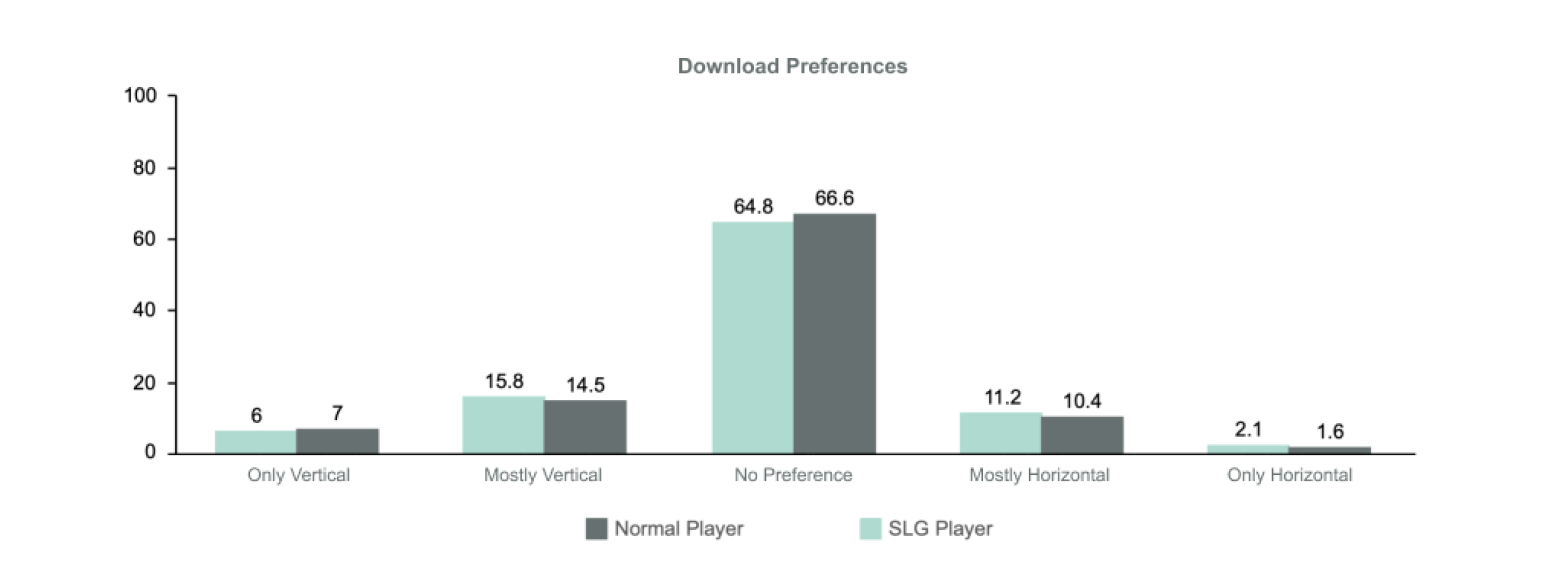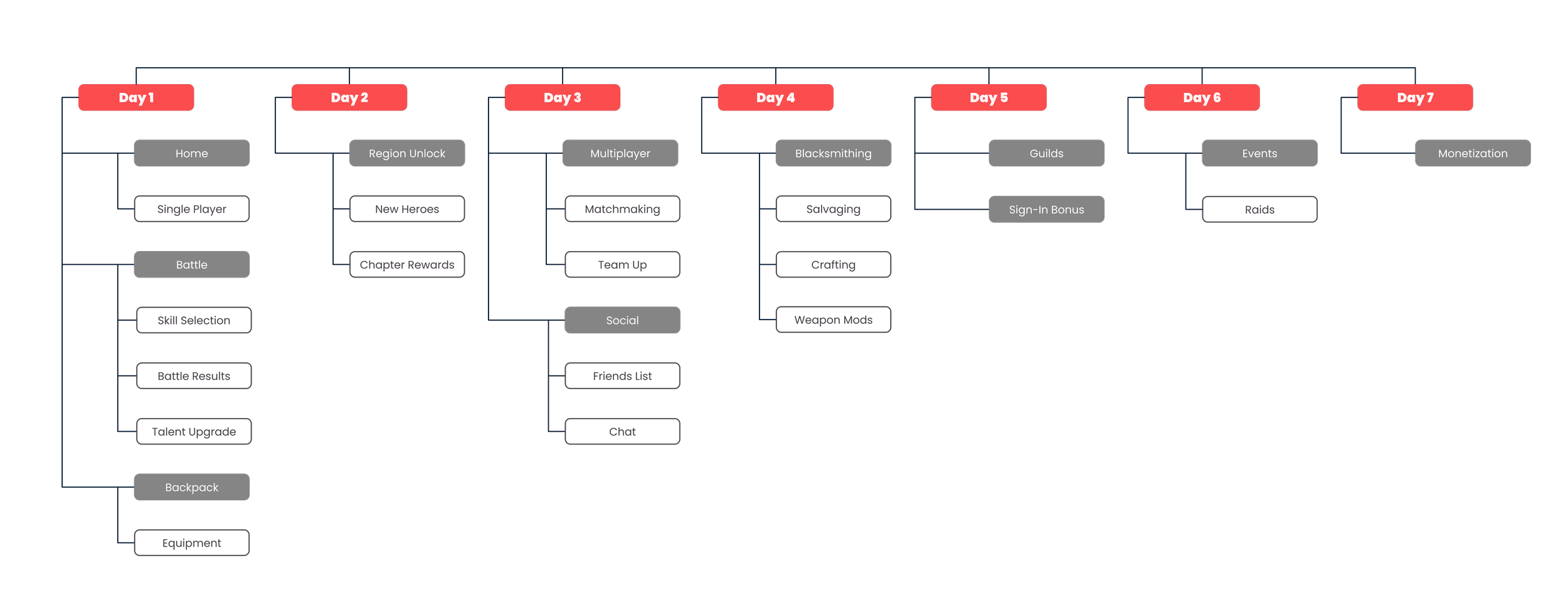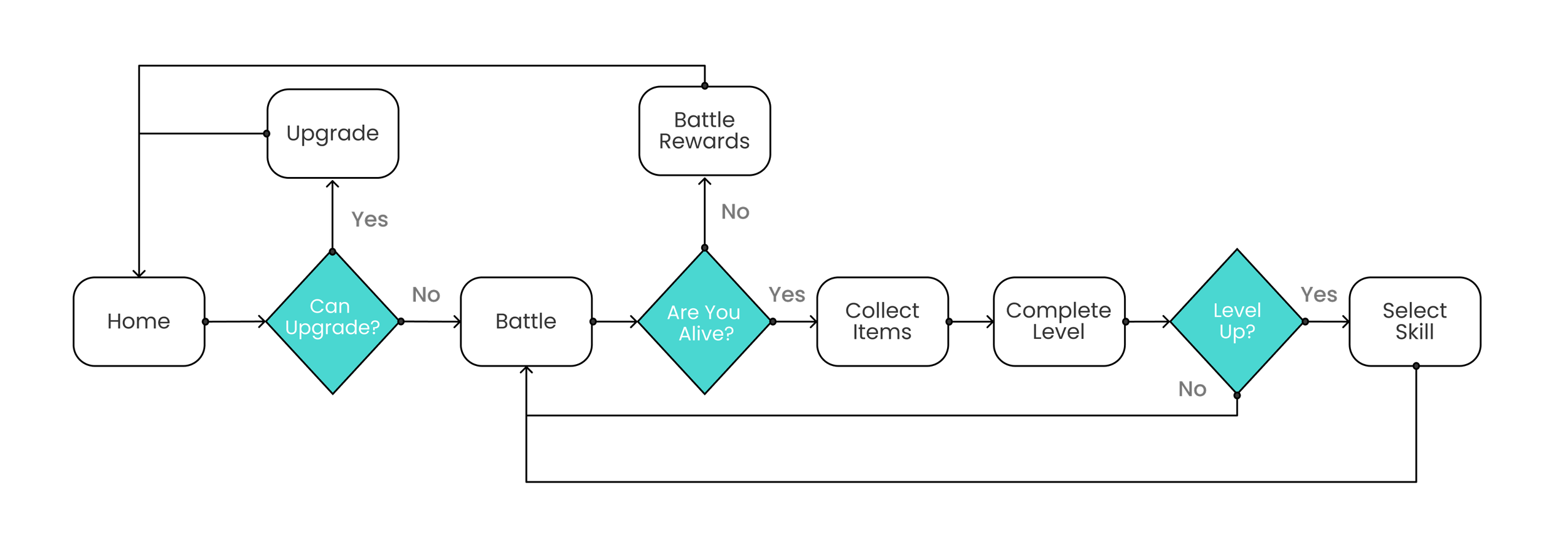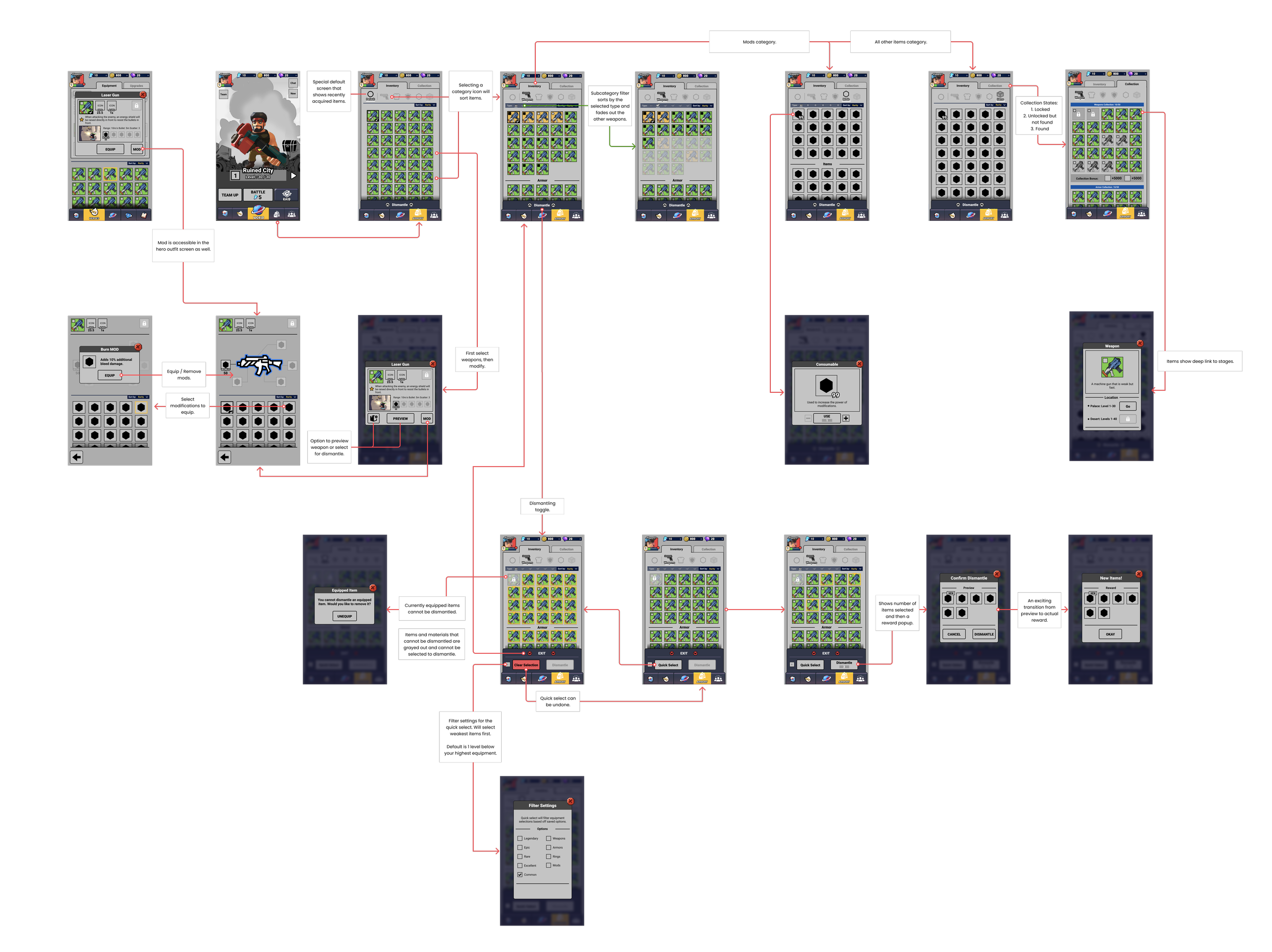Overview
Elex is a technology and mobile development company with massive success in the real-time strategy genre. Headquartered in Beijing with studios worldwide, I was part of the San Francisco Studio as the lead designer on the new development team.
As a new studio objective, Shoot Mania is a new venture into an action-rpg platform aimed at targeting the western market and style of gameplay.
Date
2021
Design
Research, Wireframes, Prototyping, Visual Design
Research
Worked with the survey team to deploy various questionnaires to gain insight on themes, demographics, and general player preferences. An example of one of the initiatives was to determine the orientation that would best drive the ideal type of gameplay and interaction we were considering. The team sampled our current target audience, the SLG and 4x players alongside a normal control group with no particular preference towards genres.
Figure 1
Orientation Preferences
Players generally prefer vertical orientation due to simplified controls and easier to grasp gameplay mechanics.
Figure 2
Download Trends
For most of the sample group, orientation does not play a major role in determining what to download. There is a slightly higher preference for vertical applications.
Figure 3
Age Demographic
When factoring age, the results were that the older bracket preferred vertical orientation; whereas, the younger audience preferred a horizontal layout.
Decision
Ultimately, the team decided on a vertical orientation for the following reasons.
We wanted to lean in heavily on simplified controls. Vertical orientation will allow us to reduce the complexity of gameplay and allow players to play mostly with one hand.
The simplification plays into the shorter sessions. Ideally, a session will last from 5 - 10 minutes depending on a player’s skill level. A second gate will be energy consumption - a potential requirement for engaging in battles. The type of proposed gameplay will contrast well with our horizontal platforms that tend to have longer and more in-depth play sessions.
The company took this opportunity to learn and further explore emerging markets and trends in the mobile space.
Planning
For the initial build, focus was more heavily set on the single player experience with a secondary focus on multiplayer capabilities. At its core, the team wanted to have an engaging and challenging experience. Rogue-like action platformers are not new to the gaming world, so we needed to set ourselves apart. We believed the answer was “sticky” gameplay mechanics layered on top of a collaborative team atmosphere would bring the change and appeal needed.
The game can be broken into the following development stages:
[D1 - D2] Introduction to the core features including battle, ability selection, talent upgrade and equipment. Players will continue to progress to unlock chapter clear rewards and new heroes.
Single Player
[D3] Team up with other players in synchronous 3v3 map. The difficulty increasingly scales along with better loot drops. Early social mechanics such as chat and friends list will further support the sense of community.
Multiplayer
[D4] Equipment will eventually play a heavy role as a driving force towards progression. Crafting and customization are advanced features that allow players to greatly increase combat potential and contribute to other engagement features such as collection and competition.
Advancement
[D5 - D7] Focusing more on engagement and retention are social features including guilds and server wide events.
Social
Game Loop
At a basic level, the main player objectives are to progress through the game relying heavily on two factors - skill and equipment. More weight is applied to human skill with an eventual threshold where equipment will be a blocker towards forward progression.
The general loop is battling in arenas, acquiring skills and equipment, and completing levels. Failure causes a player to lose their loot or winnings; therefore, skills is an important element early on.
Wireframe Flows
Working with various game designers and product owners, I created wireframes to explore potential layouts and feature flows that combine product goals with design objectives. The wireframes focused on overall screen interactions, feature sets, and breakdown for engineers as reference during development.
Main Game
The main content of Shoot Mania revolves around map with increasing difficult terrain and stronger enemies as the players attempt to clear each level. The goal is to reach specific milestones without perishing. A player loses all progress and rewards upon death and must begin again from level 1. Skill and knowledge are extremely important factors early on; therefore, it’s important for players to have a clear understanding of the controls and abilities.
Design Goals
Do players know how to navigate?
Are hero skills accessible and understandable?
Do players know how to pick up rewards?
Most importantly, is the game fun and are players returning?
Battle
The initial experience for single player, multiplayer and end level boss battles.
Skill Selection
Shoot Mania is highly dependent on a player’s knowledge and ability to maneuver, it’s important for players to have the information necessary to make make the appropriate decisions to improve the battle advantage. The randomness and combination of skills keep the game fresh and fun in an otherwise repetitive structure.
Battle Results
An introduction and preview of the more advance mechanics, the battle results screen is an important element in a risk and reward scenario. Players need to understand what they achieved, and be motivated to continue moving forward. The reward moment is supposed to be a great experience to encourage players to continue progressing despite all the challenges and failures.
The items obtained at the end of each chapter will shape the potential for players during advance crafting and modification.
Inventory
The secondary focus revolves around equipment and collection. These more late-game features further drive the idea of progression and engagement. As players defeat bosses and clear levels, they’re rewarded for their efforts. In addition, equipment will serve as an area of expression once multiplayer and social get implemented. All the amazing weapons and gear will eventually be promoted through in-game battles and the 3D avatars on the main screen.
Development
Once design requirements are met and approved, I created wireframe documents to share with the UI artists and engineers to begin implementing in Unity. For the initial builds, we were mainly focusing on Android with iOS devices slated for a later release. Each week, we would review the latest changes and I would provide feedback and updated improvements based off internal playtests.












